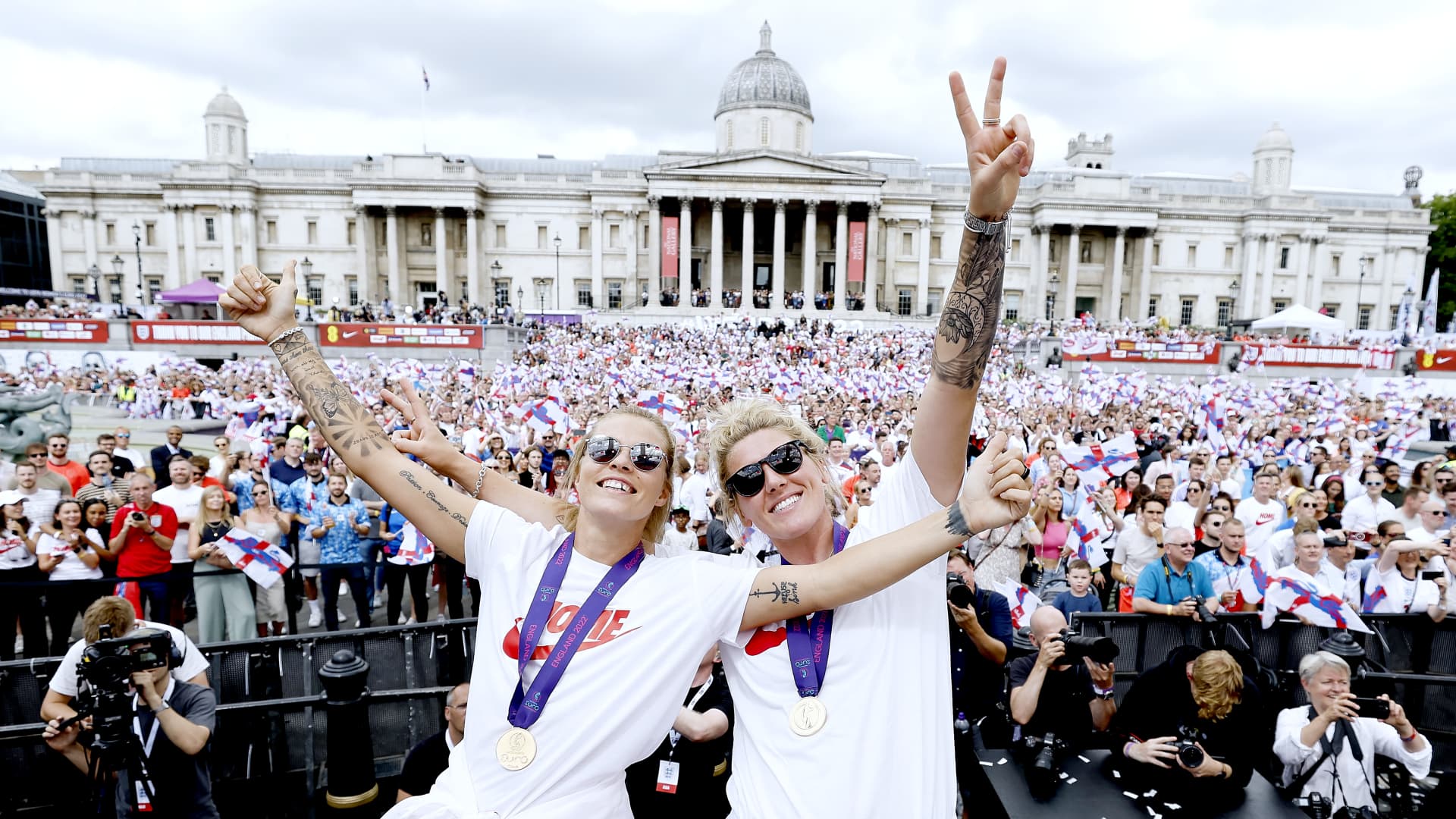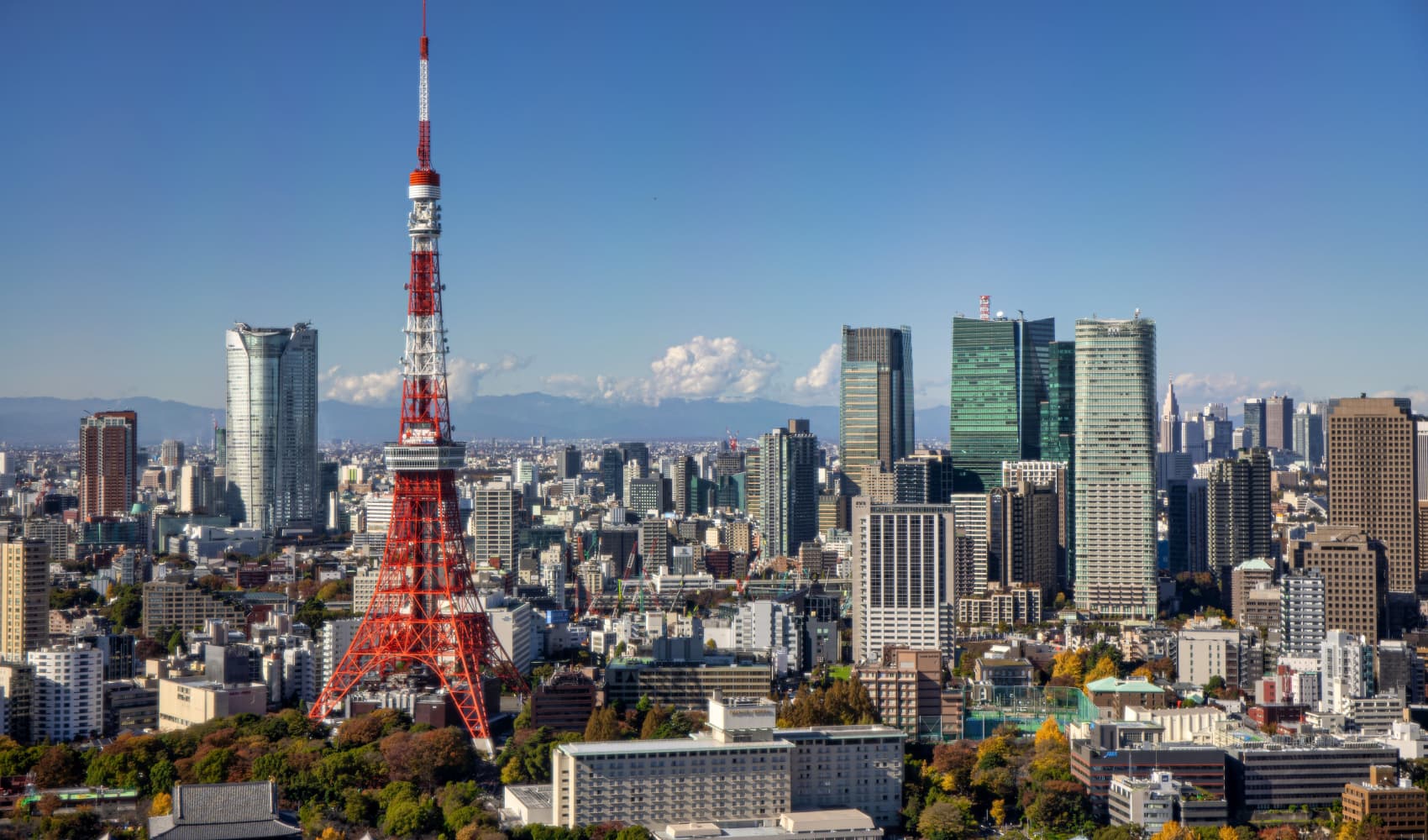
- The top-tier England women's league is selling out major stadiums after the national team won the European Championship over the summer.
- Grassroots funding and a big broadcasting deal have boosted the game, but a review has flagged increased sponsorship revenue as an important component in growing it further.
- Though the women's game already has some major corporate backers, industry figures said they expect more clubs to unbundle sponsorship packages, attracting a new kind of advertiser.
LONDON — The England women's soccer team face their U.S. counterparts at London's Wembley Stadium on Friday night, in an international friendly that has already become a record breaker.
All available tickets for the 90,000-capacity stadium were snapped up 15 minutes after going on sale, the U.K.'s fastest-ever sellout for the women's game. Fans are eager to see a showdown between the recent winners of the European Championship and the current World Cup holders.
It is the latest in a series of records that have been set by the game in recent months, reflecting a massive uptick in its popularity, which was reflected in — and boosted by — the popularity of the Euros tournament over the summer.
Feeling out of the loop? We'll catch you up on the Chicago news you need to know. Sign up for the weekly Chicago Catch-Up newsletter here.
England's three group matches sold out months ahead, and the 87,192-strong crowd that watched the 2-1 victory over Germany in the final at Wembley was bigger than that of any previous men's or women's final. Organizing body Union of European Football Associations said ticket sales brought in around 60 million euros ($58 million), nearly four times as much as the 2017 tournament, with overall attendance more than double the previous high.
Meanwhile, 50 million people around the world tuned in to watch the final on TV, up from 15 million in 2017, with 365 million people watching the tournament as a whole.
That trend has continued with the start of the 2022-23 season of the Women's Super League, the top tier of women's soccer in England. Clubs — all but one of which also have a men's Premier League team — have scheduled multiple fixtures at their main stadiums. When Arsenal Women played their arch-rivals Tottenham late last month, 53,737 fans packed in to the Emirates Stadium to see their 4-0 win, an all-time high for the league.
Money Report
WSL clubs have also reported record attendance for early games at their usual, smaller stadiums, that also tend to be farther out of city centers (something that has been cited as a challenge to growth of the game). Manchester United sold more than 6,500 tickets for its season opener against Reading, and says it expects to at least double last season's average attendance.
More money, more quality
Women were banned from playing on Football Association grounds until 1971, and there wasn't a fully professional women's league until 2018. One factor that has contributed to the current national team's success and the quality of the current elite players is increased funding at the grassroots level from bodies like Sport England over the last decade.
In 2021, the BBC and Sky signed a three-year broadcasting deal with WSL organizing body the Football Association, substantially improving the accessibility and quality of games shown on TV. Major publishers like BBC Sport have also made moves to include the women's game more prominently in coverage.
A government review launched last month will assess how to increase audiences and revenue for the game, and to create better structures around it, such as better funding for grassroots training and facilities.

Part of those efforts will involve looking at how to support the commercialization of the game through broadcast and sponsorship revenues — something industry figures told CNBC was at an early stage, but likely to grow substantially in the years ahead.
'Unbundling' packages
Jon Long, managing director for the U.K. and Middle East at sports sponsorship management consultancy Onside, said sponsorship of women's sport has generally been gathering momentum in recent years, but soccer in particular had been boosted by the Euros win and WSL relaunch.
However, there has not been a big new breakthrough deal since the summer, he said, in part because ad contracts take some time to negotiate and tend to run on three-, five- or even 10-year cycles, and because many clubs still bundle together sponsorship packages between the men's and the women's teams.
Mel Baroni, business director at agency M&C Saatchi Sport & Entertainment, agreed that while women's soccer is "absolutely riding a wave at the moment," it's still a "little bit early" to say exactly what it will mean for sponsorship.
"I think it makes a lot of sense to unbundle packages between the men and women's clubs, but there's still a conversation on the growth of the game, whether viewing figures will stay up," she said. "At the moment, the teams that are doing well in the WSL are the same ones that do well in the Premier League because the funding is coming from the men's team's sponsorship, and there's still a gulf in attendance."
It may remain miles away from the men's game in terms of pure reach. TV is where the big money is, and the Premier League is the most-watched sports competition in the world, with an estimated annual 3.2 billion viewers. WSL viewership totalled 21.1 million from January-May 2022, according to a report from Women's Sport Trust.
But brands may still see significant benefits in associating specifically with the women's game, such as being able to target demographics that include not just women — a 2021 survey found that 61.9% of women's soccer viewers in the U.K. are men — but also a domestic audience, or families.
"Unbundling would attract more brands who see the women's game as their marketing focus and not just an add-on," Baroni said. "There are opportunities to bring people together with a community feel."
Meanwhile, unbundled packages could also be more accessible to a different kind of business. Where sponsoring a Premier League team could cost tens of millions, a sponsorship package in the single-digit millions could have a wider appeal.
'You're buying into a movement'
Some corporate juggernauts have already signed major deals around the women's game. Heineken and Visa were Euros sponsors, Mastercard sponsors Arsenal Women, and Barclays is the headline sponsor of the WSL.
Katy Bowman, head of sponsorship partnerships at WSL sponsor Barclays, said part of the bank's decision three years ago to sponsor the WSL as well as the Premier League was "about purpose and way we want people to feel about us as a brand."
They also felt there was scope to have a real impact in driving the game forward, she said.
"The Premier League is more of a finished article. But if we're looking at helping the game develop and grow, the WSL gives us much more scope to do that. It's still in its infancy," she said.
She added that the exposure of the Euros added fuel to a circular economy. "We've always hoped our investment would encourage others to invest. Then you make the league more competitive, there's more money for training and facilities, you get more viewers, and then the game becomes more attractive to brands," she said.
Barclays was already looking at higher amounts for its WSL sponsorship at its last renegotiation, Bowman said. "Anyone wanting to do a club partnership now will see exponential growth over and above the usual rights fee that would be attached to current viewing figures. They are selling a projection, so it's not just about where the game is now but where it could go."
"You're buying into a movement, and nobody can put a price on that really," she said.






